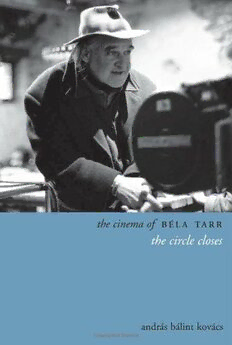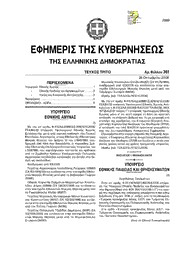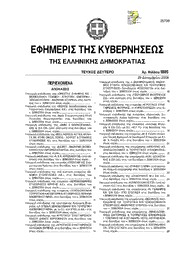
The Cinema of Béla Tarr: The Circle Closes PDF
Preview The Cinema of Béla Tarr: The Circle Closes
the cinema of BÉLA TARR DIRECTORS’ CUTS Tarr_pages.indb 1 11/03/2013 15:41 Other select titles in the Directors’ Cuts series: the cinema of STEVEN SODERBERGH: indie sex, corporate lies, and digital videotape ANDREW DeWAARD & R. COLIN TAIT the cinema of TERRY GILLIAM: it’s a mad world edited by JEFF BIRKENSTEIN, ANNA FROULA & KAREN RANDELL the cinema of TAKESHI KITANO: flowering blood SEAN REDMOND the cinema of THE DARDENNE BROTHERS: responsible realism PHILIP MOSLEY the cinema of MICHAEL HANEKE: europe utopia edited by BEN McCANN & DAVID SORFA the cinema of SALLY POTTER: a politics of love SOPHIE MAYER the cinema of JOHN SAYLES: a lone star MARK BOULD the cinema of DAVID CRONENBERG: from baron of blood to cultural hero ERNEST MATHIJS the cinema of JAN SVANKMAJER: dark alchemy edited by PETER HAMES the cinema of NEIL JORDAN: dark carnival CAROLE ZUCKER the cinema of LARS VON TRIER: authenticity and artifice CAROLINE BAINBRIDGE the cinema of WERNER HERZOG: aesthetic ecstasy and truth BRAD PRAGER the cinema of TERRENCE MALICK: poetic visions of america (second edition) edited by HANNAH PATTERSON the cinema of ANG LEE: the other side of the screen WHITNEY CROTHERS DILLEY the cinema of STEVEN SPIELBERG: empire of light NIGEL MORRIS the cinema of TODD HAYNES: all that heaven allows edited by JAMES MORRISON the cinema of ROMAN POLANSKI: dark spaces of the world edited by JOHN ORR & ELZBIETA OSTROWSKA the cinema of JOHN CARPENTER: the technique of terror edited by IAN CONRICH & DAVID WOODS the cinema of MIKE LEIGH: a sense of the real GARRY WATSON the cinema of NANNI MORETTI: dreams and diaries EWA MAZIERSKA & LAURA RASCAROLI the cinema of DAVID LYNCH: american dreams, nightmare visions edited by ERICA SHEEN & ANNETTE DAVISON the cinema of KRZYSZTOF KIESLOWSKI: variations on destiny and chance MAREK HALTOF the cinema of GEORGE A. ROMERO: knight of the living dead TONY WILLIAMS the cinema of KATHRYN BIGELOW: hollywood transgressor edited by DEBORAH JERMYN & SEAN REDMOND the cinema of WIM WENDERS: the celluloid highway ALEXANDER GRAF Tarr_pages.indb 2 11/03/2013 15:41 the cinema of BÉLA TARR the circle closes András Bálint Kovács WALLFLOWER PRESS london & new york Tarr_pages.indb 3 11/03/2013 15:41 A Wallflower Press Book Published by Columbia University Press Publishers Since 1893 New York • Chichester, West Sussex cup.columbia.edu Copyright © András Bálint Kovács 2013 All rights reserved. Wallflower Press® is a registered trademark of Columbia University Press A complete CIP record is available from the Library of Congress ISBN 978-0-231-16530-3 (cloth : alk. paper) ISBN 978-0-231-16531-0 (pbk. : alk. paper) ISBN 978-0-231-85037-7 (e-book) Series design by Rob Bowden Design Cover image of Béla Tarr courtesy of the Kobal Collection Columbia University Press books are printed on permanent and durable acid-free paper. This book is printed on paper with recycled content. Printed in the United States of America c 10 9 8 7 6 5 4 3 2 1 p 10 9 8 7 6 5 4 3 2 1 Tarr_pages.indb 4 11/03/2013 15:41 contents Acknowledgements vii Introduction 1 1 The Persona 7 2 Style in the Early Years 21 3 The Tarr style 47 4 The Tarr style in Evolution 72 5 Narration in the Tarr Films 99 6 The Characters 154 Conclusion 171 Filmography 177 Select Bibliography 180 Index of Names 182 v Tarr_pages.indb 5 11/03/2013 15:41 Tarr_pages.indb 6 11/03/2013 15:41 acknowledgements As a matter of fact the people to whom I am deeply thankful for their helping me writing this book are the same people this book is about: Béla Tarr, Ágnes Hranitzky, László Krasznahorkai, Mihály Víg, Gyula Pauer and Gábor Medvigy. Over the past twenty years or so they have shared every detail of their work related to the films of Béla Tarr that was of interest to me. Some of them I hadn’t seen for many years, but when we met they were as open and helpful as when we were in close collaboration. It is needless to say that my close friendship with Béla Tarr and Ágnes Hranitzky gave me a perspective on their work I wouldn’t have otherwise. Their friendship and support has been an invaluable contribution to this book. However, never did they give any indication as to what they expected me to say or to write. They always respected my opinion, even when we disagreed. Tarr and Hranitzky were the only ones I showed the manuscript of this book. They both read it and meticulously corrected factual errors and commented on my statements. Sometimes disapprovingly. There was an issue, however, they could not get past. We argued a lot over it, and finally they said, ‘This is your book, write what you think’. Out of respect for their point of view, I summarised this controversy in the last chapter. I have always felt that I owed this book to them, and I can only hope that it will be worthy of their huge work. vii Tarr_pages.indb 7 11/03/2013 15:41 Tarr_pages.indb 8 11/03/2013 15:41 INTRODUCTION This book is a critical analysis of the work of Hungary’s most prominent and inter- nationally best-known film director, Béla Tarr. Anyone who is acquainted with his work will see immediately the consistency with which Tarr develops his themes, char- acters and style throughout his career. His films are like variations on a number of basic themes and formal motifs where the themes themselves become intertwined, or absorbed, in one another. We can best approach his films by learning how they relate to each other, how they vary these elements. As far as I can see, Tarr’s films are the result of a conscious and sustained development of a style in order to make it more and more expressive of a specific vision Tarr has about the people and the world around him. This form changes only slightly from film to film as the stories change, but since the stories are based on the same elements, the form and the style basically modify the same motifs. In this process it is possible to observe a filmmaker trying out different solutions, experimenting with aesthetic effects so as to make his statement more trans- parent. My main approach will thus be to show an internal evolution detectable in the films’ stylistic and thematic systems through which Tarr has arrived at a degree of expressivity, one which seems impossible to increase within this system. Tarr follows a very particular method in developing his works, which I will call the permutation principle. I will show that almost all the important stylistic and narrative elements were already present in Tarr’s early films, and with the help of a conscious and meticulous recombination of and experimentation with these elements, Tarr arrived at what I will call the ‘Tarr style’. This permutation principle concerns not only the stylistic level, but higher, narrative and thematic levels too. Once he found the successful ingre- dients and their combinations, he continued developing this style in various radical ways. This is how he arrived at a point where only two possibilities seemed viable: returning to a more classical formal system, or abandoning his formal and thematic world altogether. The first choice required too many compromises and seemed impos- the circle closes 1 Tarr_pages.indb 1 11/03/2013 15:41
The list of books you might like

Believe Me

Do Epic Shit

The Spanish Love Deception

The 5 Second Rule: Transform your Life, Work, and Confidence with Everyday Courage

Umwelt und Gesundheit

by BS Geology, Universidad de C6rdoba, Argentina

Greek Government Gazette: Part 7, 2006 no. 680

Secret Diary of Elisabeth Leseur

What Diantha Did

Ca atalogu ue 48: P Portra aits

Greek Government Gazette: Part 4, 2006 no. 129

Greek Government Gazette: Part 3, 2006 no. 361

DTIC ADA426630: Do We Need An Information Corps? (Joint Force Quarterly, Autumn 1993)

Cytoskeletal Changes of Vitrified Porcine Oocytes

Globalizzazione e decadenza industriale. L'Italia tra delocalizzazioni, «crisi secolare» ed euro

Accelerating Kerr-Newman black holes in (anti-)de Sitter space-time

Greek Government Gazette: Part 2, 2006 no. 1845

Quarterly News Letter

Les tribulations d'un chinois en Chine by Jules Verne

Greek Government Gazette: Part 2, 2006 no. 1611




